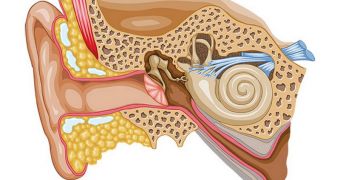Scientists at the Massachusetts Institute of Technology (MIT) Microsystems Technology Laboratory (MTL), working with colleagues from the Harvard Medical School (HMS) and the Massachusetts Eye and Ear Infirmary (MEEI), are currently developing a cochlear implant that will require no hardware.
At this point, people who get such implants need to wear an external sensor on their ear, which captures and processes ambient sound before turning them into electrical signals that stimulate the auditory nerve. The team plans to advance cochlear implants by removing this external component.
These medical devices are extremely important worldwide, since they restore at least partial hearing to hundreds of thousands of people. Without it, all of these individuals would be completely deaf. Currently, these prosthetics consist of a transmitter and an over-sized hearing aid-like device on the ear.
The MIT group is currently refining an innovative, low-power, signal-processing microchip that does all the work of picking up sounds, and converting them into electrical signals, without the need for external hardware on patients' ears.
The team says that the device will feature a built-in battery that can be recharged wirelessly, providing up to 8 hours of non-stop functionality on a single charge. The prototype charger developed at MIT can be plugged into any mobile phone, and recharges the device in less than 2 minutes.
Details of the device were presented at the International Solid-State Circuits Conference last week. The paper accompanying the prototype was authored by MIT Department of Electrical Engineering and Computer Science experts Marcus Yip, Rui Jin, and Nathan Ickes.
“The idea with this design is that you could use a phone, with an adaptor, to charge the cochlear implant, so you don’t have to be plugged in. Or you could imagine a smart pillow, so you charge overnight, and the next day, it just functions,” explains Anantha Chandrakasan.
The expert, who was the corresponding author of the paper, holds an appointment as the Joseph F. and Nancy P. Keithley professor of electrical engineering at MIT. His lab at the Institute specializes in developing low-power chips for various applications.
This device is “very cool. There’s a much greater stigma of having a hearing loss than there is of having a visual loss. So people would be very keen on losing the externals for that reason alone,” comments the director of the Cochlear Implant Center at the University of California in San Francisco, Lawrence Lustig.

 14 DAY TRIAL //
14 DAY TRIAL //